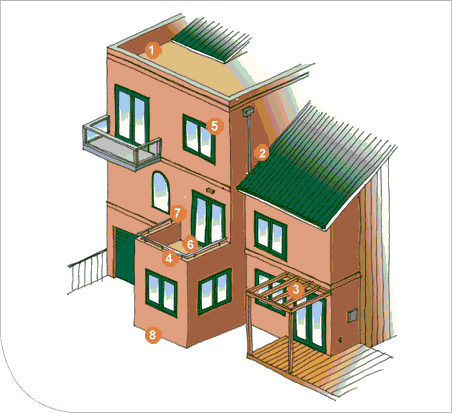Mould in damp buildings
How to clean mould and fungi safely.
Last updated: 1 March 2024
If you’re a homeowner and think you have a leaky home, there are a few things you need to know.
From the mid-1990s, some houses were built in a way that did not withstand weather conditions and did not comply with the New Zealand Building Code. Some houses leak because of design issues and problems around installing materials.
Once water or moisture gets behind certain cladding types, and if there is no drainage and ventilation between the cladding and the framework, the water becomes trapped and the potential for fungal growth and rotting rapidly increases.
There are many issues with having a leaky home, including the effect it may have on your health or your finances if the damage gets worse.
If your leaks are coming from internal sources such as plumbing, you do not have a leaky home. A leaky home means water from outside your house has made its way in, and is causing damage.
A leaky home is not weathertight. Most weathertightness issues aren’t obvious. However, if water is dripping or pooling inside your home when it rains, you are likely to have a leak. Also look out for:
Certain areas of your home will be more prone to taking on excess moisture than others, and there are some common building features that can cause problems with weathertightness. The following features have been commonly associated with weathertightness issues:
 Common building elements that are prone to leaks
Common building elements that are prone to leaksIf your home has some or all of these features it does not necessarily mean you have a leaky home, but it does highlight areas to be aware of.
Decks, balconies and balustrades – Find out more about the risks and warning signs.
This information is published by the Ministry of Business, Innovation and Employment’s Chief Executive. It is a general guide only and, if used, does not relieve any person of the obligation to consider any matter to which the information relates according to the circumstances of the particular case. Expert advice may be required in specific circumstances. Where this information relates to assisting people:
This will print only the current page of this guidance document.
Print this page